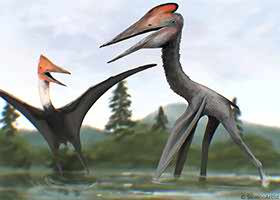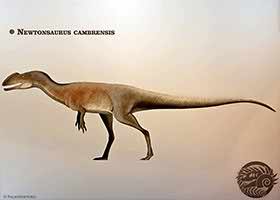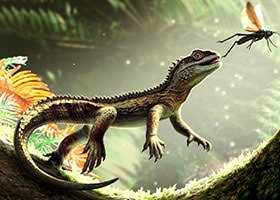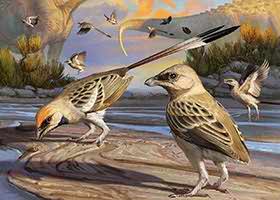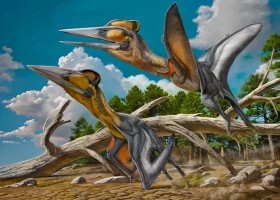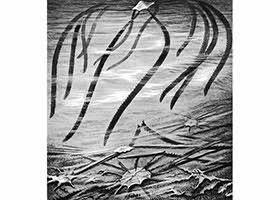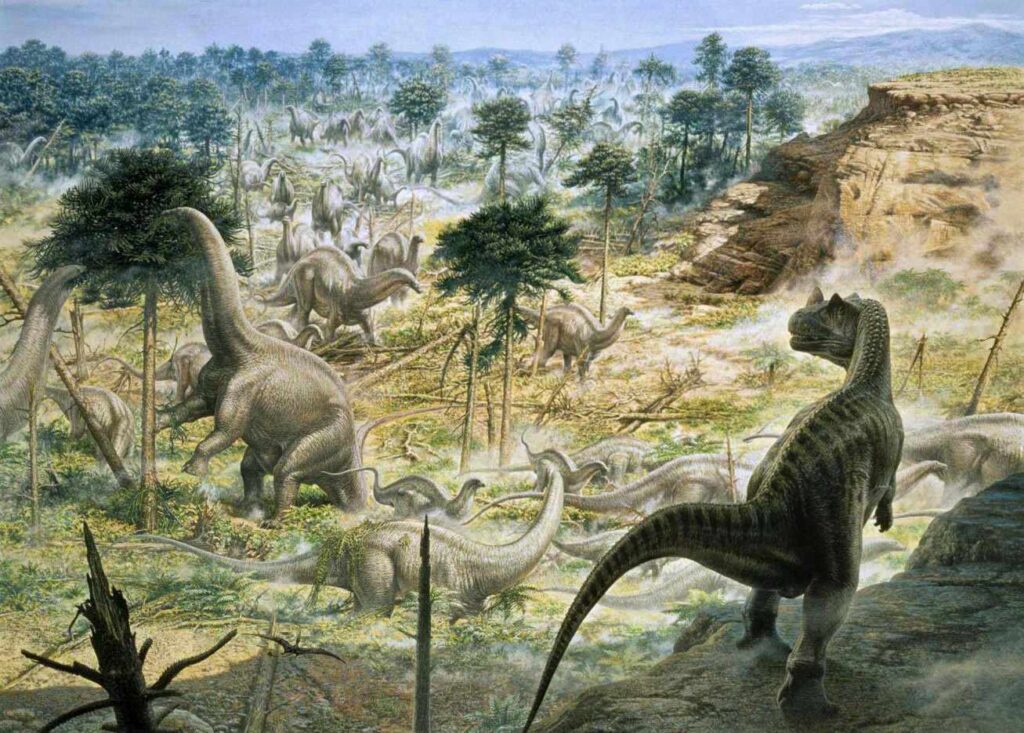
The article discusses the most interesting facts about the lives of ancient dinosaurs. They were the largest creatures ever to inhabit the land. During the Mesozoic era, these gigantic reptiles ruled the entire Earth. Later, they became completely extinct, and our ancestors — mammals — spread across the land. However, paleontologists continue to uncover more and more fossils of these famous reptiles.
Dinosaurs were reptiles and inhabited the Earth from 230 to 65 million years ago, which is almost 165 million years in total.
The first reptiles appeared 80 million years before dinosaurs, in the late Carboniferous period, about 310 million years ago.

Dinosaurs lived during the Mesozoic era (the “middle life” era). They existed throughout all three parts of this era: the Triassic, Jurassic, and Cretaceous periods.
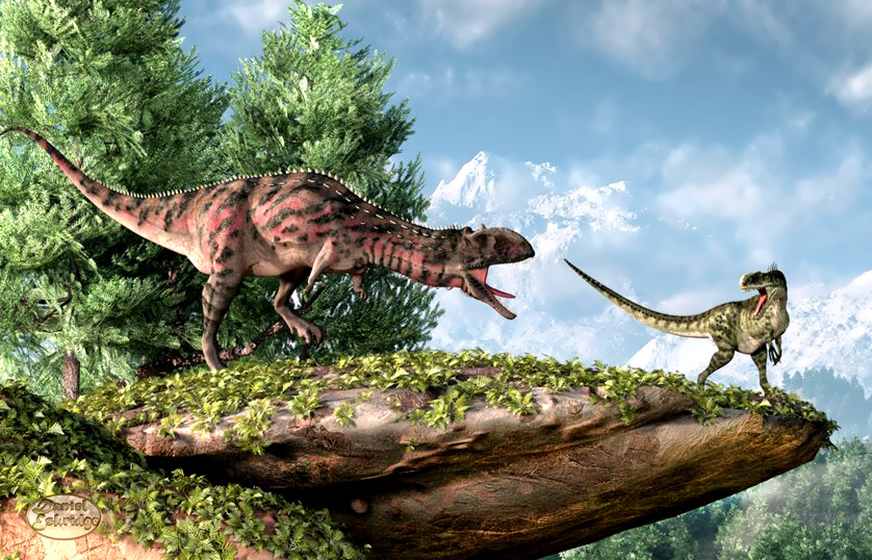
Theropods
Carnivorous dinosaurs are known as theropods, which means “beast-footed”; they also had sharp, curved claws on their fingers. In contrast, herbivorous dinosaurs typically had blunt hooves or nails on their feet.
Dinosaur skulls had large openings or “fenestrae”, which made them lighter. Some of the largest skulls were as long as a car.

Various types of dinosaurs
Scientists have estimated that there were more than 1,000 different species of bird-like dinosaurs and over 500 different genera. They speculate that there are many undiscovered dinosaurs, and the total number of genera could be as high as 1850.
Dinosaurs lived on all seven continents, including Antarctica.
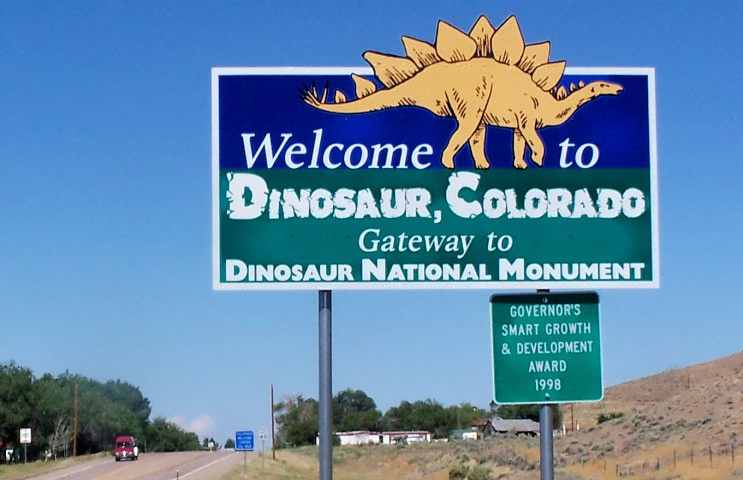
Colorado is nicknamed the “Dinosaur State”. The first Stegosaurus skeleton was found near the town of Morrison in the state of Colorado.
The largest of the large herbivorous reptiles would have needed to consume about a ton of food per day. This daily heap of vegetation would have been the size of a bus.
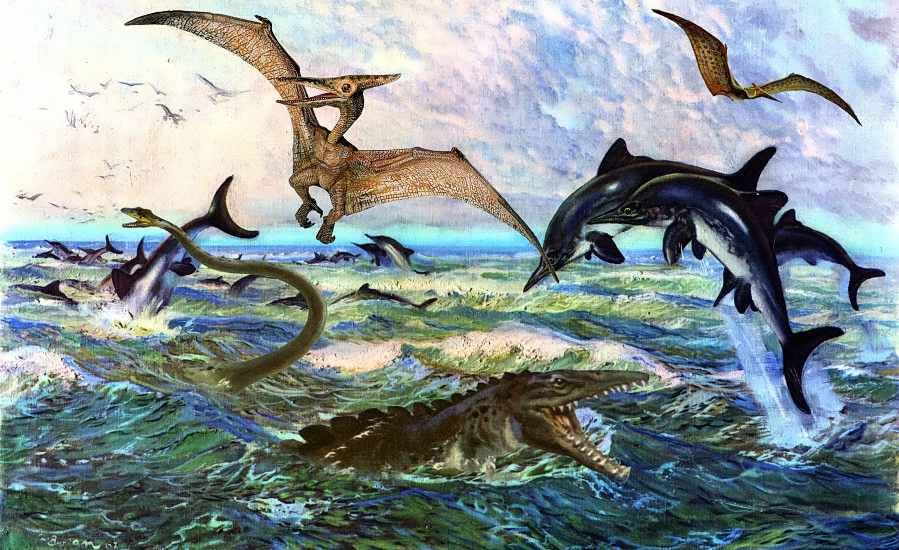
Although mosasaurs, ichthyosaurs, pterosaurs, and Dimetrodon are often mentioned alongside dinosaurs, technically they are not dinosaurs. The term “dinosaur” refers to land-dwelling reptiles that have a specific pelvic structure, among other characteristics.
While many people believe that all dinosaurs were large and massive, they were usually about the size of a human or smaller. Scientists believe that larger bones are simply more likely to fossilize, which is why they are found more often.
Most dinosaurs had long tails that helped them maintain balance while running. The tails of some dinosaurs were longer than 14 meters.

Eoraptor
The earliest of the mentioned dinosaurs found so far is Eoraptor (“dawn thief”). It was named this because it lived at the dawn of the dinosaur era. It was a carnivorous predator about the size of a German Shepherd. The first Eoraptor skeleton was discovered in the foothills of the Andes in Argentina in 1991. However, another ancient dinosaur dating back 243 million years was recently found in Tanzania. Its name is Nyasasaurus.
Dinosaurs are divided into two groups based on the structure of their pelvic bones. In saurischian or lizard-hipped dinosaurs, one of the bones points forward. In ornithischian or bird-hipped dinosaurs, all the bones pointed backward. Ironically, scientists believe that birds descended from lizard-hipped dinosaurs, not bird-hipped ones.
The term “dinosaur” was coined by British paleontologist Richard Owen in 1842. In Greek, it means “terrible lizard”. Owen used this term to denote their majesty and size, not implying that dinosaurs were fearsome monsters.
The very first formally named dinosaur was Megalosaurus, and this happened in 1824.
The first dinosaurs that appeared during the Triassic period 230 million years ago were small and lightweight. Large dinosaurs like Brachiosaurus and Triceratops emerged during the Jurassic and Cretaceous periods.
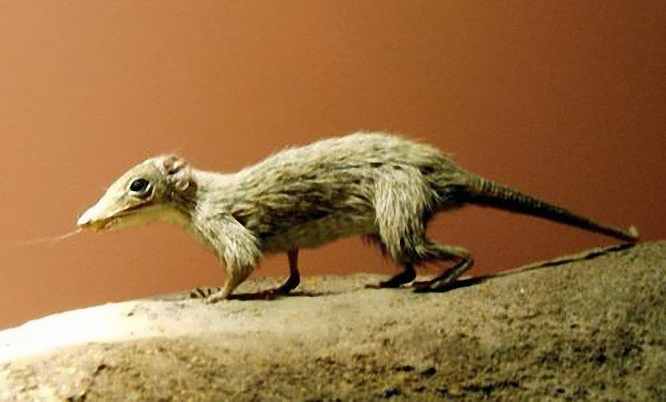
One of the earliest mammals
Dinosaurs coexisted with early mammals. Mammals evolved around the same time as dinosaurs, at the end of the Triassic period, and coexisted with them throughout the entire Mesozoic era. However, most early mammals were small creatures, about the size of a mouse.
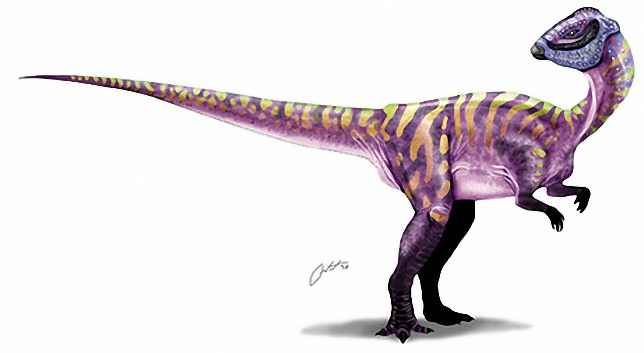
Micropachycephalosaurus
The dinosaur with the longest name is Micropachycephalosaurus, which translates to “tiny thick-headed lizard.” Its fossils are usually found in China.
Dinosaurs ruled the Earth for over 165 million years, while humans only appeared 3 million years ago.
No one knows for sure what the lifespan of dinosaurs was. Some scientists speculate that certain dinosaurs might have lived for up to 200 years. It is estimated that they typically live up to about 40 years, based on more accurate data.


The Cretaceous-Paleogene (K–Pg) mass extinction event, also known as the K–T event, happened 65.5 million years ago. Scientists have several theories to explain the extinction of dinosaurs and other animals. Some suggest small mammals ate dinosaur eggs, while others believe factors like large bodies of dinosaurs becoming too large for their small brains, meteorite impact, infectious diseases affecting reptiles, starvation, or climate change could have contributed. Learn more about this event at Dinosaur Extinction.
Before humans appeared on Earth, over 99.9% of all animals had already gone extinct.
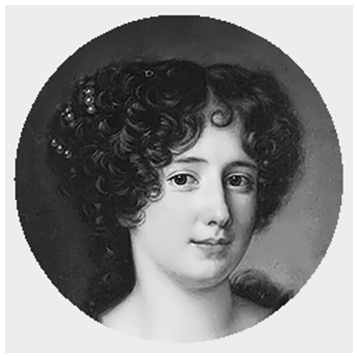
Mary Anning
Mary Anning (1799–1847) was one of the most famous fossil hunters. However, she was never taken as seriously as she deserved, likely due to being a woman from a poor background, while most scientists came from wealthy families.
Scientists believe that some dinosaurs were cold-blooded, some were warm-blooded, and others did not neatly fit into either category. Small carnivorous reptiles might have been warm-blooded, while less active herbivores were likely cold-blooded. A warm-blooded animal requires about 10 times more food than a cold-blooded animal of the same size.
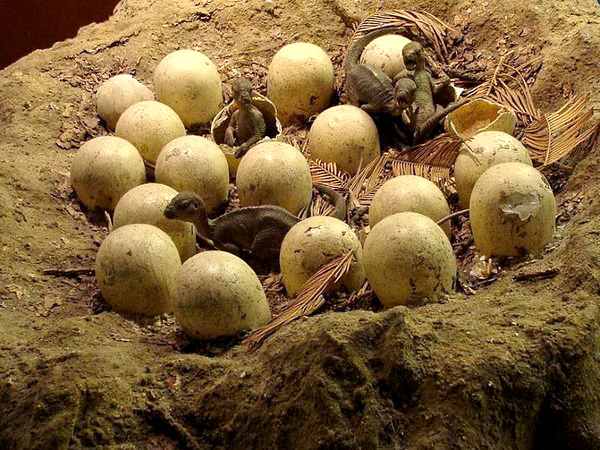
Dinosaur nest
Researcher Roy Chapman Andrews discovered the first known dinosaur nest in 1923 in the Gobi Desert, Mongolia. Before he found this nest, scientists did not know how dinosaur babies were born.
The largest dinosaur eggs were about the size of a basketball. The bigger the egg, the thicker the shell. Therefore, if the eggs were even larger, the dinosaur hatchlings likely wouldn’t have been able to break out of them. Each clutch could contain between 10 to 40 eggs.
The first dinosaurs were predators or carnivorous reptiles. Later, herbivorous and omnivorous (eating both meat and plants) dinosaurs appeared.
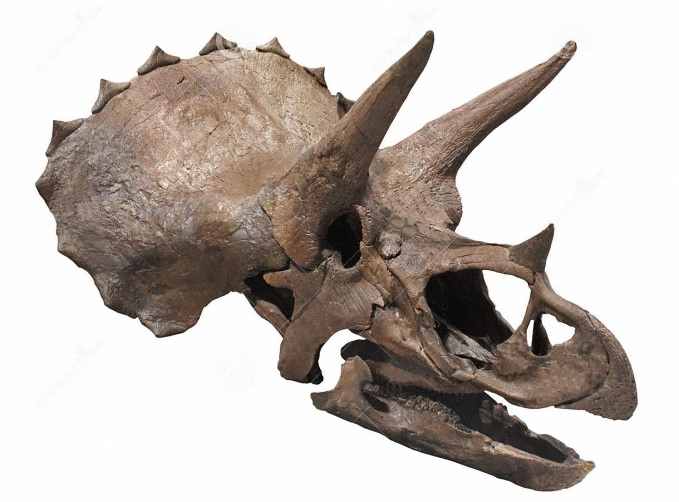
Triceratops skull
Triceratops had the largest skull with a solid frill, bigger than any other dinosaur. It could measure up to 2 meters in length, with a bony collar around its neck.
Most dinosaurs were herbivores (plant-eaters).
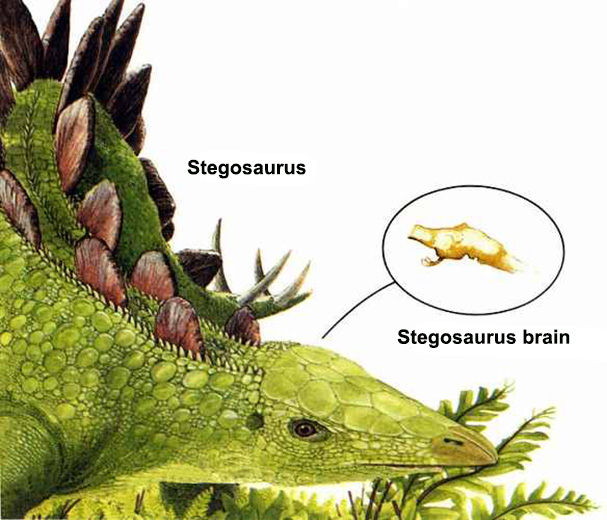
Stegosaurus had the smallest brain among all known dinosaurs relative to its body size. Its body was about the size of a van, but its brain was only the size of a walnut.
One Native American tribe, the Piegan (a subgroup of the Blackfeet Indians) from Alberta, Canada, believed that dinosaur skeletons belonged to the “buffalo fathers”. Three hundred years ago, the English thought that dinosaur bones came from elephants or even giant humans.
The first recorded account of a possible discovery of dinosaur bones dates back to China around three and a half thousand years ago. People back then didn’t know about dinosaurs, so they thought their findings (which were dinosaur teeth) were related to dragons.

Liopleurodon
Reaching up to 15 meters, Liopleurodon was the largest marine reptile, half the size of a modern blue whale.
Most carnivorous dinosaurs had bones with air-filled cavities. Despite their massive size, their bones weren’t as heavy as one might think. Birds have a similar type of hollow bones.
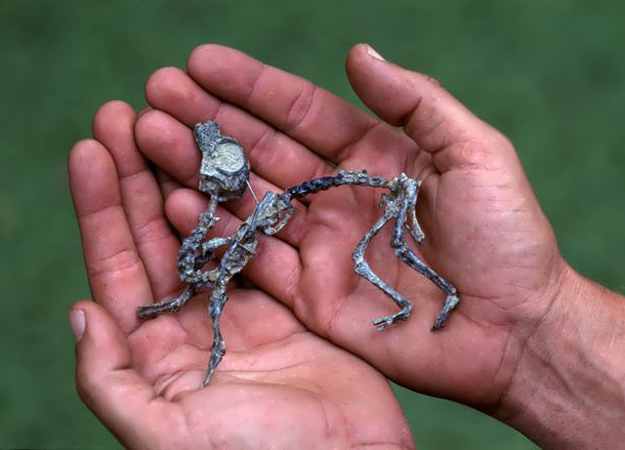
Mussaurus
The hatchlings of Mussaurus (meaning “mouse lizard”) are the smallest dinosaur skeletons ever found. They could fit in a shopping bag.
Small predators were likely the most intelligent among all types of dinosaurs.
Human eyes are forward-facing, allowing us to see the world in three dimensions. Herbivorous dinosaurs like Triceratops had side-facing eyes to spot danger while they fed.
A newborn human baby has a larger brain compared to most adult dinosaurs. Whales and dolphins have the largest brains among all living animals.
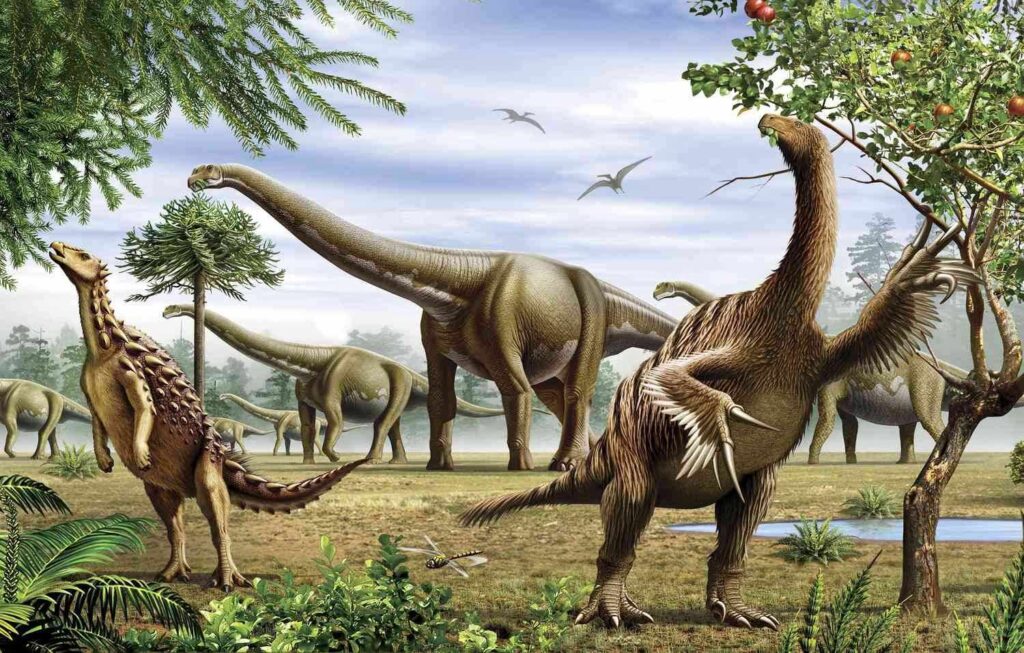
Scelidosaurus, Nothronychus and Argentinosaurus
Most carnivorous reptiles moved on two legs, making them fast and freeing up their front limbs for capturing prey. Most herbivorous dinosaurs walked on four legs to better support their heavy bodies. Some herbivores could temporarily balance on two legs.

The shed snake skin
Snakes and lizards shed their skin as they grow. Some researchers speculate that some dinosaurs might have done the same.
Some dinosaurs possibly had colored skin, but scientists are not certain about this. Most likely, many dinosaurs had green and brown scales, which helped them blend in with trees and plants.

Tyrannosaurus rex
Tyrannosaurus rex had massive hind legs, but its tiny front arms were not much larger than human hands.

One of the largest dinosaur footprints
While dinosaurs had a similar set of leg bones, some had legs resembling those of rhinos, elephants, birds, or pigs. The largest footprints ever found measured 1.20 meters in length and 1 meter across. Millipedes have more legs than any other animals, with up to 750 legs.

Gastroliths
Dinosaurs often swallowed large stones. These stones, called gastroliths, remained in their stomachs and helped grind down tough food.
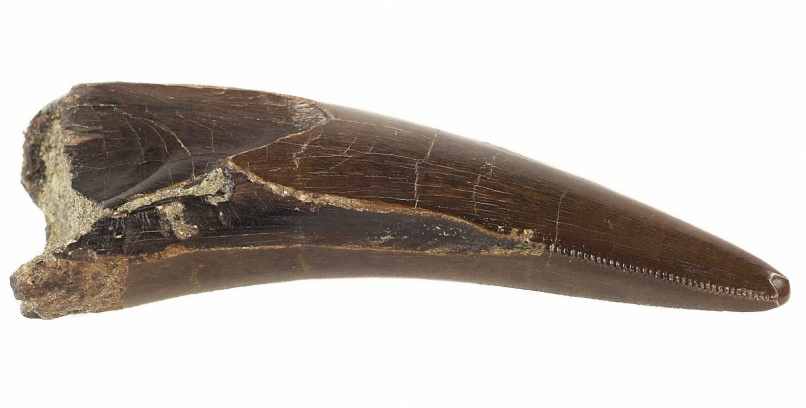
Tyrannosaurus tooth
Tyrannosaurus rex could consume up to 22 tons of meat per year. Its serrated teeth were about 15 cm long. It could not chew, so it swallowed its food in large chunks.
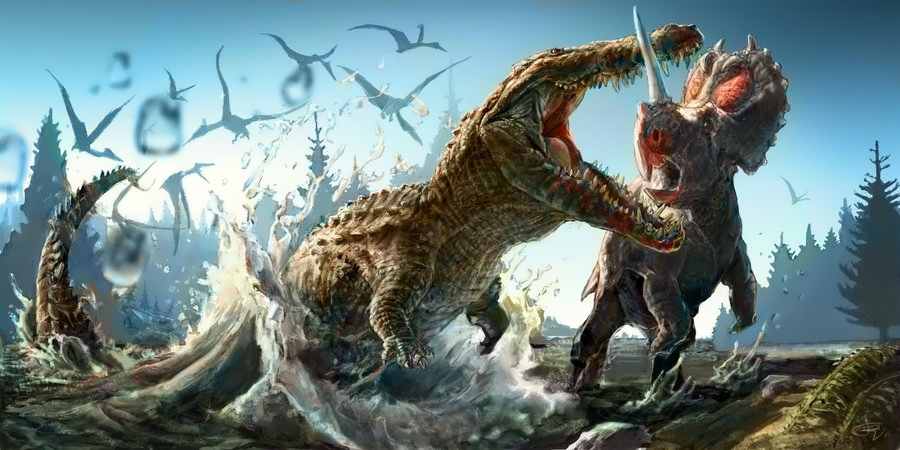
Deinosuchus attacks a horned lizard
Deinosuchus was a gigantic prehistoric crocodile. It had the strongest bite among all ancient reptiles, including Tyrannosaurus rex. Its weight was eight times that of a modern crocodile.
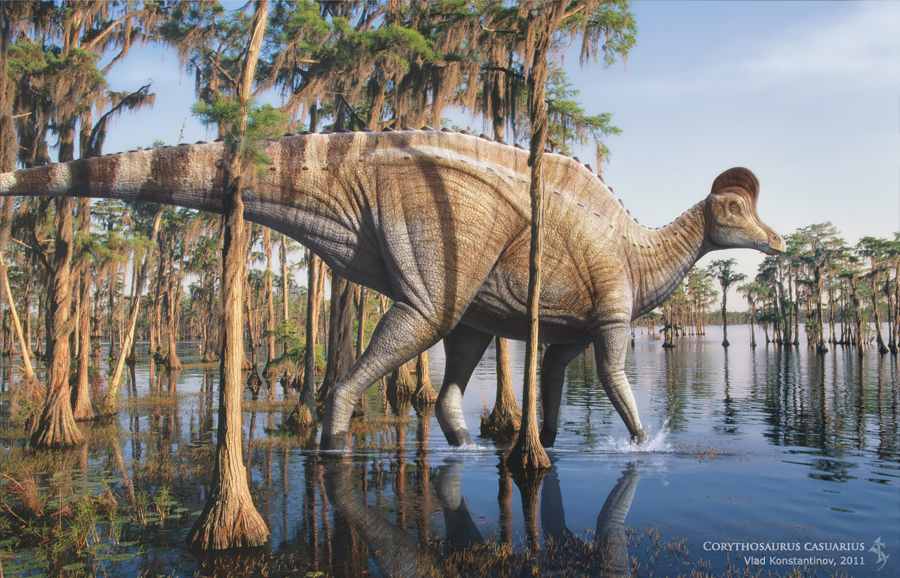
Corythosaurus had a large crest, and its nasal passage connected to this crest. The crest worked like an echo chamber, allowing it to produce loud sounds.
When Apatosaurus swung its tail, the tip could break the sound barrier, creating a loud crack similar to a gunshot.
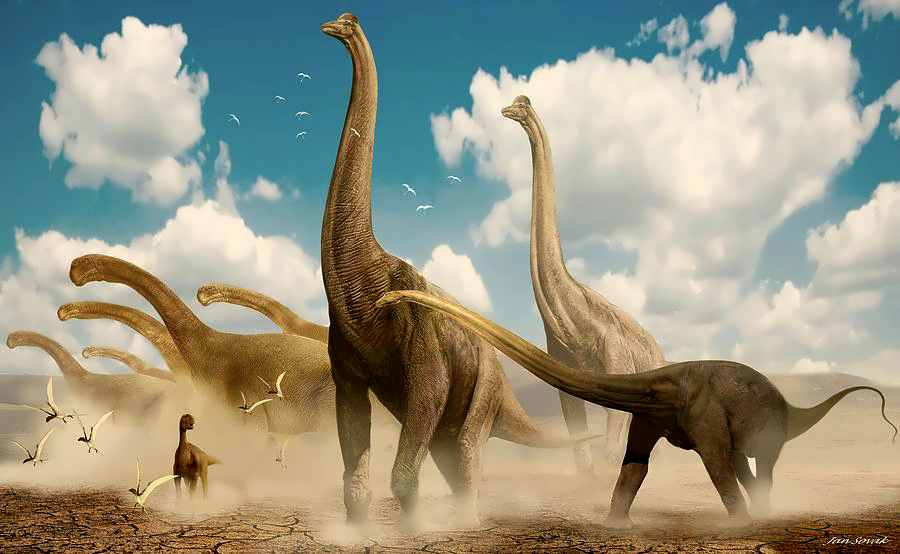
Sauropods
The sauropods were the tallest creatures that have ever roamed the earth. Some of them were twice the height of a giraffe.
Struthiomimus (“ostrich mimic”), along with other small predators, produced high-pitched, screeching noises similar to those made by ostriches.

Parasaurolophus
Parasaurolophus had a crest resembling half a trombone. The crest of a male could be up to 1.8 meters long, making it the largest crest among all dinosaurs.
Some scientists initially believed that Tyrannosaurus rex could run at speeds of 28 km/h. However, after considering its skeletal structure and massive weight, these views were revised, and it is now believed that it couldn’t run faster than 20 km/h.
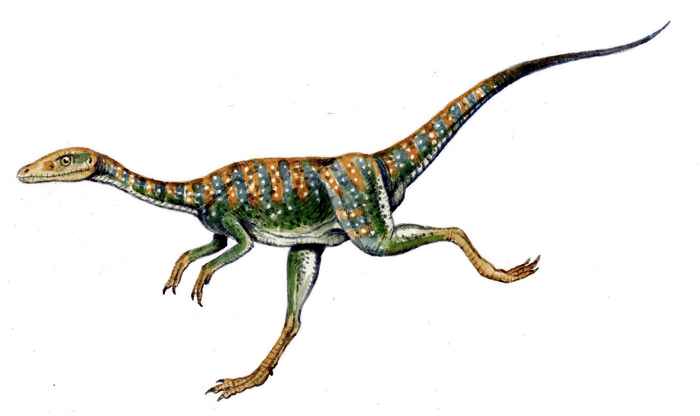
Compsognathus
Slender dinosaurs like Compsognathus and Ornithomimus were among the fastest dinosaurs. Ornithomimus could reach speeds of up to 70 km/h. Nevertheless, a cheetah can run faster than any dinosaur that ever existed.
Dinosaurs that could run on two legs were called bipeds.
Dinosaurs had various mechanisms of self-defense. Carnivores had sharp teeth, herbivores had long horns or sharp spikes, and others were covered in bony plates.

Dinosaur eggs
Estimates suggest that trillions of dinosaur eggs were laid during the Mesozoic era, but fossilized eggs containing embryos are extremely rare.
All dinosaurs laid eggs. About 40 species of dinosaur eggs have been discovered.
Modern birds and reptiles have a single opening in their bodies for urination, defecation, and reproduction called a cloaca (“sewer” in Latin). Paleontologists believe that dinosaurs had a similar structure and reproduced by connecting their cloacas in a “cloacal kiss”. Additionally, some dinosaurs possibly had a penis, similar to some birds, or other reproductive organs like crocodiles. The reproductive organ of a male Tyrannosaurus rex, for example, could have been up to 3.5 meters long.
Like birds and reptiles today, dinosaurs built nests and laid eggs. Some even cared for and protected their hatchlings.

Herd of dinosaurs
Herbivorous dinosaurs often lived in groups for better protection, similar to modern-day herding animals. Herds ranged from a few adults and juveniles to dozens of individuals.
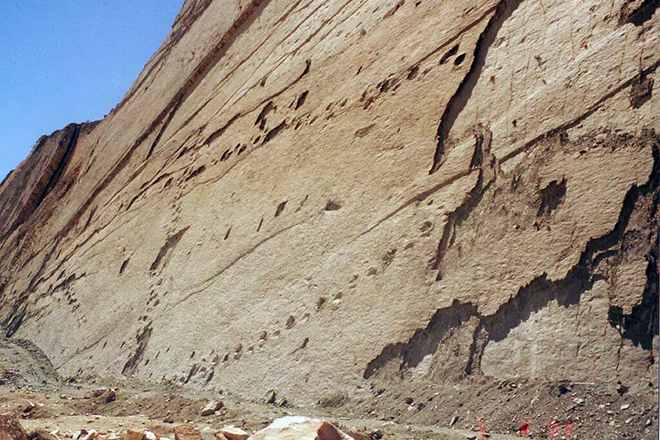
Dinosaur Tracks in Colorado
Sauropods (“lizard-footed”) could cover many kilometers in a day on their massive legs. Their fossilized tracks, known as “trackways” or “superhighways”, can still be seen preserved to this day.
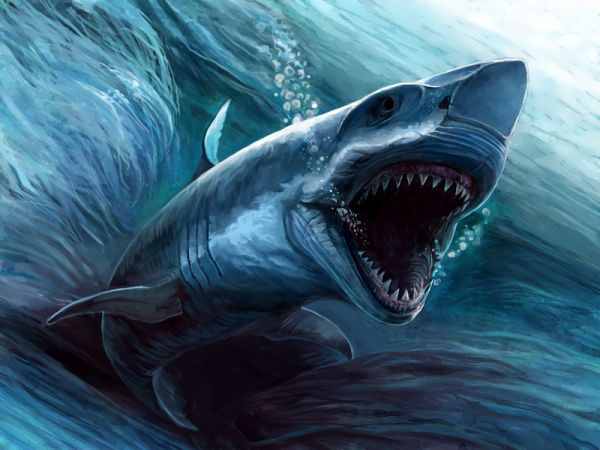
Megalodon
Megalodon was the largest prehistoric fish. It resembled a shark but was three times larger.
Dinosaurs that live near bodies of water often leave the best-preserved fossils.
The largest predator was Spinosaurus. It reached a length of 15 meters.
The largest herbivorous dinosaur was Argentinosaurus. Its length reached 30 meters. However, it is possible that the body length of the sauropod Breviparopus from the group of brachiosaurs was even greater — 48 m.
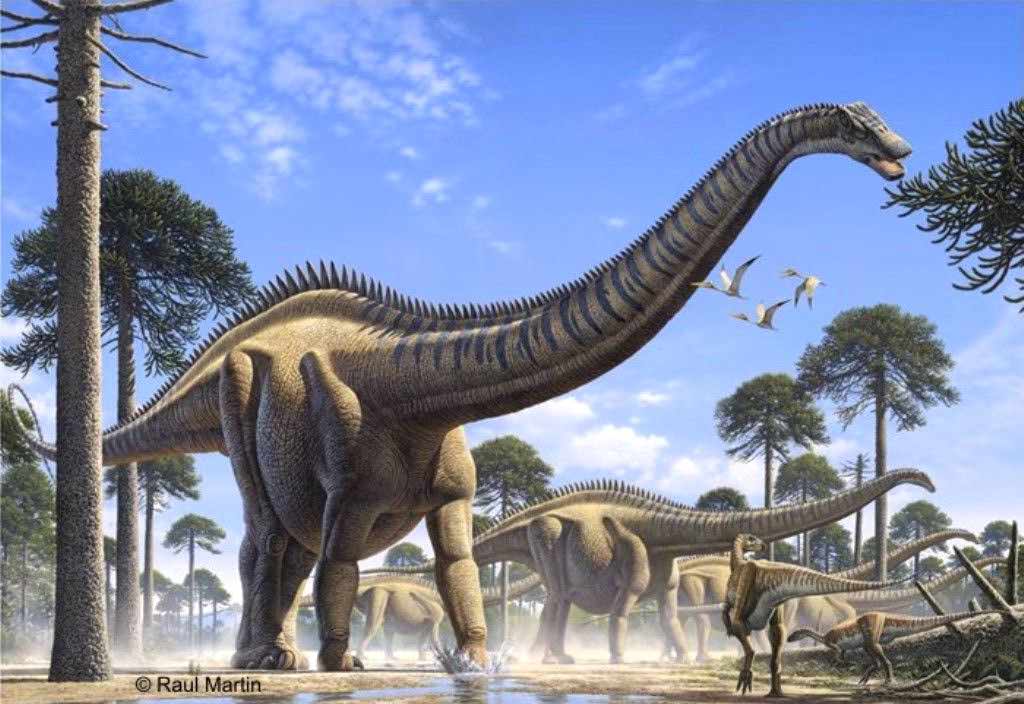
Supersaurus
One of the heaviest dinosaurs was Supersaurus. It weighed as much as 10 elephants.
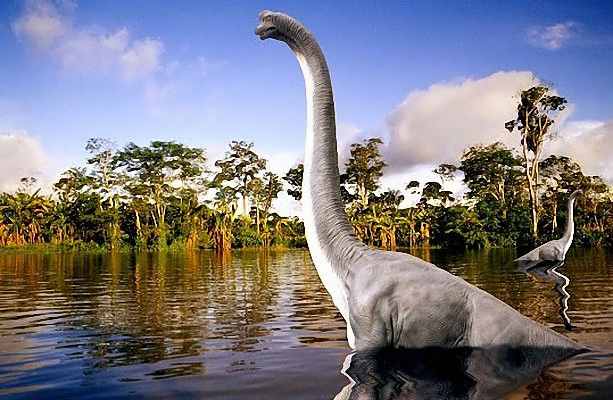
Giraffatitan brancai
The tallest plant-eating dinosaur was Giraffatitan brancai of the brachiosaurid family, discovered in Tendaguru, Tanzania. Its head reached a height of 12–14 meters.
The dinosaur with the thickest skull was Pachycephalosaurus. Its skull grew to a thickness of 20 cm.
The largest skull (3 meters in length) belonged to Pentaceratops.
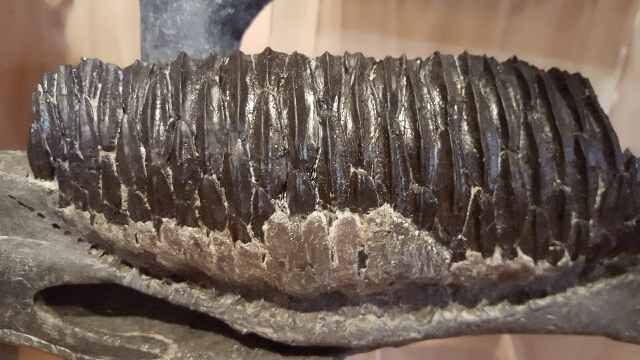
Hadrosaur teeth
Did you know that hadrosaurs were the dinosaurs with the most teeth? They could have more than 1,000 teeth, and new teeth were constantly growing for them.

Quetzalcoatlus
The largest flying reptile was Quetzalcoatlus. Its wingspan was 12 meters.
The dinosaur with the longest claws was Therizinosaurus (“scythe lizard”) from Mongolia. Its claws were 90 cm long. Its snout ended in a toothless beak, and it had four functional fingers on each paw.

Therizinosaurus claw
Therizinosaurus, commonly known as the “scythe lizard”, is a highly distinctive dinosaur from Mongolia characterized by its long claws, vibrant feathers, and clumsy, plump build. Its claws reached nearly one meter in length, appearing as formidable weapons for attacking other dinosaurs. However, Therizinosaurus was an herbivorous theropod and used its claws for gathering vegetation.
The tallest predator was Deinocheirus (“terrible hand”). The height of its head was 6 meters from the ground.
The most fearsome terrestrial predators in Earth’s history were Tyrannosaurs. Adult specimens weighed around 5–6 tons, stood 5–6 meters tall, and were 12 meters long.
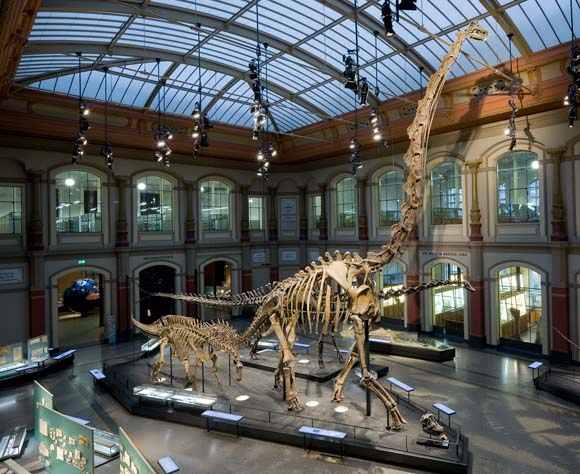
Brachiosaurus skeleton
The largest mounted dinosaur skeleton for display is the Brachiosaurus.
Stegosaurus had massive vertical plates on its back that could grow up to 75 cm in height. While scientists don’t fully understand the function of these massive plates, they speculate that Stegosaurus could control its body temperature by regulating blood flow through them. Stegosaurus might have also been able to control the color of its skin in a way to attract a mate or deter predators. Scientists refer to this color change as “blushing”.
The smallest complete fossil of an adult dinosaur is Lesothosaurus (“Lizard from Lesotho”). It reached only the size of a chicken. Smaller fossils have been found, but they are all juvenile dinosaurs.
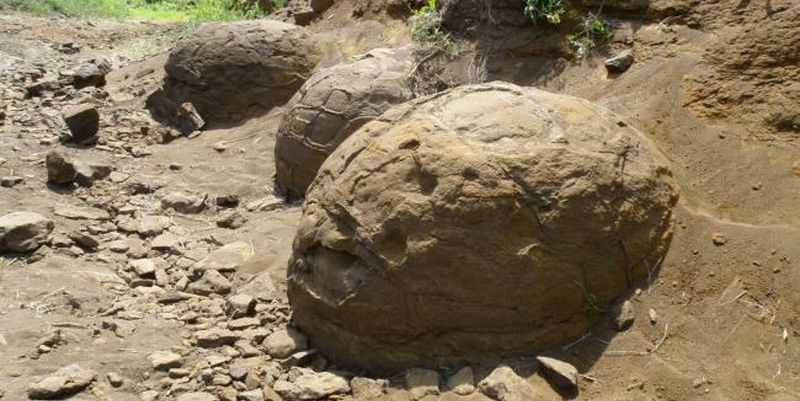
Big dinosaur eggs
The smallest dinosaur egg ever found, out of all those discovered, measured just 3 centimeters and weighed 75 grams. It is unknown which species it belongs to. The largest known dinosaur eggs belong to a carnivorous dinosaur from Asia called Segnosaurus (“slow-moving lizard”). These eggs reached lengths of about 47 centimeters.
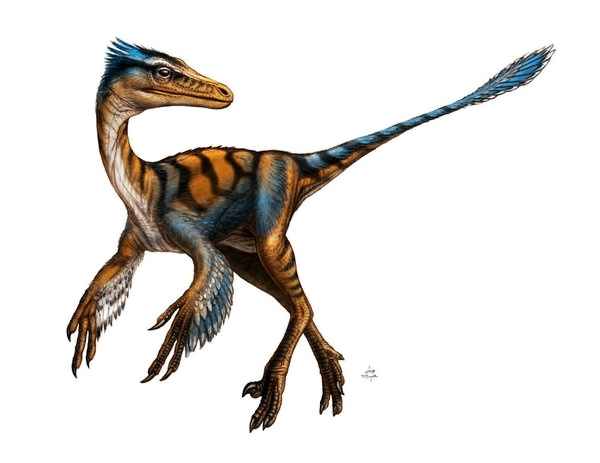
Troodon
The most intelligent dinosaur was likely Troodon (“wounding tooth”). It had a brain size comparable to that of modern mammals or birds. It also possessed grasping hands and stereoscopic vision.
The first known American dinosaur was discovered in 1858 in pits of marl clay in Haddonfield, New Jersey. Although other fossils had been found earlier, they were misidentified as dinosaur fossils.

Othniel Charles Marsh and Edward Drinker Соре
There was fierce competition between paleontologists Edward Cope and Othniel Marsh in their search for new dinosaur fossils, leading to what is known as the “Bone Wars”. This rivalry lasted for over 30 years. Marsh, it’s said, “won” these wars, partly because he found more fossils and also because he secured better funding.

An erroneous reconstruction of an iguanodon by Gideon Mantell
Paleontologists are not always correct. For example, Gideon Mantell (1790–1852) placed the large thumb of Iguanodon on its nose. This version of reconstruction persisted for 40 years. Edward Cope (1840–1897) reconstructed Elasmosaurus (“thin plate”) with the head at the end of its tail rather than the neck. Until recently, Apatosaurus was displayed in museums with the head of Camarasaurus (“chambered lizard”).
Modern “hotspots” for fossil dinosaur discoveries include South America (particularly Argentina) and China, where several feathered dinosaurs have been found.

Birds evolution
Dinosaurs from the theropod group evolved, they developed plumage and wings. As a result, birds became direct descendants of dinosaurs.












